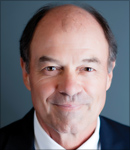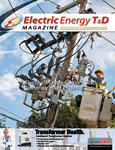Our final GreenWays interview for 2011 is with two key executives from EnerNex, a dynamic and increasingly influential company nestled in the Smoky Mountains of Tennessee that has risen from a modest engineering services firm to national prominence in a relatively short period since its founding in 2003. For readers that might not be that familiar with EnerNex, they have been very active in promoting the use of standards across the Smart Grid landscape from its very beginnings. But among their most notable acccomplishments has been bringing the term ‘interoperability’ squarely into focus and making it a part of our daily lexicon. Under the aegis of Erich Gunther – the company’s chairman, co-founder and CTO as well as Smart Grid Interoperability Panel (SGiP) Administrator – Doug Houseman and Ben Boyd are tasked (respectively) with charting the firm’s technological innovations and navigating the constantly changing regulatory and policy waters of an industry in transition. A tall order indeed, but their approaches to these daunting tasks and how those efforts fit into the greater good of our national Smart Grid initiatives are the substance of this interesting discussion. – Ed.

Ben Boyd
Vice President
Regulatory/Policy

Doug Houseman
Vice President
Technical Innovation
EET&D : EnerNex has been on a pretty fast ramp-up since it’s founding in 2003. Maybe we can start off with a quick recap of the company’s mission and vision. Ben, would you like to lead off with a brief synopsis?
Boyd : Yes, I’ll be happy to do that. EnerNex provides research, engineering and smart grid consulting services, for the power industry. We focus on providing services around the development and application of new and emerging electric power technologies to engineer a cleaner, smarter energy system of the future.
EET&D : Is there any particular dimension of the company that stands out as a defining product, service or other activity, Doug?
Houseman : Well, our primary product is really information, usually packaged as technical reports, measurement data, design recommendations or expert advice. Moreover, our services are often utilized in conjunction with the development of key fundamental technologies, such as the original EPRI IntelliGrid initiative, with which our founders and early employees were integrally involved.
EET&D : So are all of your energies directed to a services model then?
Houseman : No, we do get involved in some product development, such as programmable communicating thermostats and utility consumer gateways. Our business also involves us in the basic research and development of these new technologies, leading to proof of concept implementation projects as well as mainstream deployment products and projects. And more recently we’ve been at the forefront of technology and integration issues for large-scale wind generation, where we are leading efforts to build tools and models for better understanding the impact of large wind plants on transmission network operations.
EET&D : I think it’s fair to say that you’ve played an important role in bringing the Smart Grid standards and standardization process to an elevated status over the past few years as those initiatives have evolved. Talk a little bit about that, if you would…
Houseman : We have always worked hard to understand the intersection of technical and operational requirements and practice an evolutionary, standards-based approach to solving real-world power systems operational problems, so it’s really in our DNA to take a leadership role in that dimension of Smart Grid evolution. We take great pride in the work we do, and our quality is ensured by the dedication, expertise and teamwork of all of our employees.
EET&D : Part of what you have been doing – a large part, I would say, has been toward making interoperablility a practical reality across what were once disparate networks, products and systems. But interoperability is one of those terms that everybody likes to use – and thinks they understand – but in reality, there are probably a lot of different definitions and interpretations out there. So what do you mean by interoperability? Is there a succinct way to describe what that term really means?
Houseman : Yes, I think there is. Interoperability is the ability of two or more networks, systems, devices, applications, or components to communicate and operate together effectively, securely and without significant user intervention. And if you want to dig a little deeper, other more technical factors come into play. For example, communication requires agreement on a physical interface and communication protocols; exchanging meaningful and actionable information requires common definitions of terms and agreed upon responses; and consistent performance requires standards for the reliability, integrity, and security of communications. Ben, anything you’d like to add?
Boyd : I would also say that interoperability also embraces the “plug-and-play” concept – the ability to simply connect functionally dissimilar entities and have them work together seamlessly and support interchangeability, the ability to readily substitute components without corrupting or interrupting safe and reliable operation.
EET&D : Are there any noteworthy developments on that front that may be of interest to our readers?
Houseman : As you mentioned earlier, we place a huge emphasis on interoperability, and interoperable Smart Grid applications have recently moved beyond talk and into real-world technology implementations. For example, by the time this issue is published, we will have provided a first-of-its-kind demonstration of Smart Grid interoperability in a literal show-and-tell of devices and systems in action. Today, Smart Grid vendors are truly “walking the walk” by demonstrating real-world applications of Smart Grid interoperability, albeit with simulated end-to-end utility systems – from the back office to the residential consumer’s thermostat.
EET&D : Does that mean we have actually reached the practical implementation stage then?
Houseman : Yes, standards and standardization efforts are now bearing real fruit. Within the next thirty days, a cross-section of industry organizations will be able to demonstrate 15 to 20 examples of emerging, evolving and mature interoperability standards in three categories: 1) Demand Response, including both residential and commercial and industrial (C&I) products and solutions; 2) Interoperability of transmission and distribution devices that monitor, protect and control modern power delivery networks; and, 3) Enhanced cyber security features for electric utility control systems such as SCADA (supervisory control and data acquisition) and distribution management systems. We have a large demonstration making its debut at an upcoming conference that will showcase the state of the art in detail.
EET&D : Let’s switch topics here to the customer side of the business; something that has been getting quite a lot of attention lately. Ben, in your opinion, are consumer attitudes about the grid changing, and of so, what do you feel is driving those changes?
Boyd : Let’s face it, Mike. The electric power grid we have all known and loved for over a hundred years is undergoing a revolution, even though on one level it continues to be part of an ongoing technological evolution. Clearly it’s some of both, but one thing is certain: the consumer is rising to the level of equal partner in the new equation of the 21st century, something that will not likely change anytime soon, if ever.
EET&D : I certainly don’t disagree that the voice of consumers is definitely being heard louder than ever before, but speaking both as a former regulator1 and now a consultant, to what do you attribute that trend?
Boyd : For one thing, consumers are now being allowed to voice their concerns in certain venues where they were not heard before. This cultural shift engages all players instead of just the utility representative and the regulator as was often the case in the past. So called creative collaboration is made up of consumer advocates, policymakers, regulators, utilities, technology companies, service providers, and the media. And why not? The electric grid affects everybody. Issues such as health concerns from radio waves, consumer data privacy and access, and dynamic pricing impact on revenue-challenged consumers demand that those directly impacted and those in a position to impact have a seat together at the decision-making table before the regulator must make a decision, if at all possible.
EET&D : What would you say are some of the challenges associated with this dramatically heightened level of consumer engagement?
Boyd : There are many challenges indeed. I’m sure we won’t be able to cover them all here, but let me summarize a few of the most important ones…
First of all, the Smart Grid message has not been focused on consumer benefits – that is, highlighting and showcasing benefits that would be particularly meaningful and very tangible in the eyes of consumers. For example, utility bills typically represent a relatively small percentage of monthly expenses for a large portion of the population. So, if the average electricity bill is $60 per month, a savings of 10%, or $6, on the bill is not something for most consumers to get excited about. Today, for the most part at least, they are happy with the status quo because they have not been educated as to the reasons for change. As energy costs increase – as they are predicted to do – then those attitudes will likely change and the questions to the regulators will increase.
Second, the Smart Grid movement has very little inertia upon which to build. Again, for the most part, there has been little relationship – or at least not a satisfactory one – between the utility and the customer, although it is improving. To the degree that there has been dialog with utilities regarding Smart Grid, it has tended to be mostly acrimonious. The regulatory process tends to be adversarial, with advocates on every side arguing for positions ostensibly in support of their special interests. This simply cannot continue since sooner or later everyone will have to realize that like it or not, we’re all in this together.
Finally, and following from the previous point, consumers do not typically trust their utility. Again, that is something that will likely change as previously monopolistic utilities, now facing potential competition on several fronts and on various levels, will have to learn a new kind of customer service, which is in many ways in stark contrast to what they had been accustomed to in the past.
EET&D : How does that change to collaborative thinking begin?
Boyd : Since 2008, the idea of a creative collaborative has become popular enough for industry regulators to order the local utilities to pay for this foundational planning exercise. A premier example is the Illinois Statewide Smart Grid Collaborative, ordered by the Illinois Commerce Commission as part of an order resulting from a smart grid cost recovery filing by Commonwealth Edison (ComEd), headquartered in Chicago. The stated goal of that collaborative was to ensure that consumers are the primary beneficiaries of smart grid deployments in Illinois.
The Illinois Collaborative addressed a wide range of stakeholder smart grid issues, including how regulators should evaluate proposed smart grid investments, technical issues – including security, standards, and interoperability – and consumer issues (e.g., data privacy/access, consumer education, etc.). A wide range of stakeholders participated in the Illinois Collaborative.In addition to the investor-owned utilities and Commission staff, participants included consumer advocates, municipal governments, environmental groups, retail electric suppliers, RTOs, and vendors. What better way exists to bring all stakeholders to the table?
In this case, EnerNex was very fortunate to be named the facilitator for the Collaborative. Through this process we learned that, in spite of the many differences in stakeholder concerns and perspectives, much common ground exists and that collaborative planning can result in a smarter Smart Grid plan or roadmap.
EET&D : What were some of the primary benefits gained through this process?
Boyd : Certainly a better understanding of Smart Grid technologies among stakeholders provided a more realistic view of potential benefits, costs, and risks. It also afforded the participants a much clearer picture of consumer-related Smart Grid issues as well as a clarification of the various, and sometimes divergent, stakeholder views/positions on these issues.
EET&D : Were there any tangible outcomes from the Illinois Collaborative effort?
Boyd : Yes, absolutely. It produced a range of specific consensus recommendations from the stakeholder group on many issues for the Commission to consider. It also narrowed the issues on which the Commission must focus its future efforts, reduced the potential for future litigation, and established a dialog among stakeholders on Smart Grid issues that will likely continue.
But perhaps more importantly, the idea of changing to a culture of listening and collaboration is alive and well at the Illinois Commerce Commission. I’m personally aware that regulatory commissions in Arkansas, Colorado, Hawaii, Michigan, Minnesota, New York, Oregon, Rhode Island, and Vermont have expressed interest in learning more or are in the process of taking on this approach to planning for the Smart Grid.
Also, it would be inaccurate to omit California and Texas from the list because of their tremendous head start with smart metering; however, since I have not talked to their Commissioners directly about this approach, I can’t speak with the same level of certainty. What I can say is that the value of a collaborative approach can be stated in one phrase: Consumers become partners in the process instead of victims. Trust is more likely to evolve as the process unfolds. Old attitudes of “us versus them” can dissipate, and the potential for a Smart Grid that is consumer-friendly and consumer-valued can be vastly enhanced through this type of process.
1 Ben Boyd is a former member of the Texas Public Utility Commission, which regulated rates before Texas became restructured. He also worked for the Texas Railroad Commission, which regulates natural gas rates.








